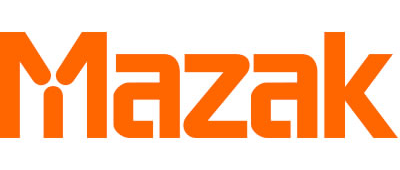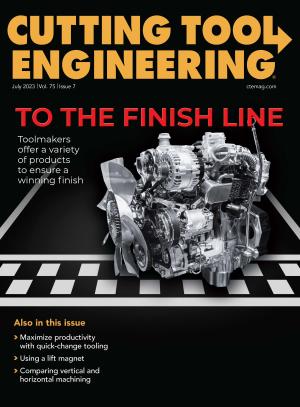Launched in the early days of World War II, Graetz Manufacturing Inc. began as a family-run sawmill and blacksmith shop that made equipment and repair parts for the local farming community. Located in Pound, Wisconsin, the company has continued to recognize and adapt to the needs of customers and implement necessary machining technology as demand warrants.
Graetz Manufacturing gradually expanded its machining capabilities to make parts, such as gears, sprockets and shafts, and the company produces components and entire machines for the agricultural, marine, logging and packaging industries. In addition to machining, the manufacturer offers a full welding/fabrication shop, including heat treating, and a tool and die shop, said President Jamie Graetz, who noted that his great-uncle Edward founded the business over 80 years ago.

“We’re not just a machine shop,” he said. “We actually run a job shop and a production facility side by side. Most of our production runs consist of families of parts from 50 to 500 pieces and are for OEMs in the agriculture side of the business. We have long-term partnerships, some more than 50 years in length, with most major agriculture OEMs.”
Workpiece materials range from steel and cast iron to bronze and aluminum, and tolerances are typically as tight as 0.0076 mm to 0.0127 mm (0.0003" to 0.0005").
Graetz said the company regularly adds equipment to improve efficiency at its 12,077-sq.-m (130,000-sq.-ft.) facility, and one of the shop’s most recent acquisitions was a Mazak VC-Ez 20 three-axis vertical machining center.
“I believe it was the first one that came off the line,” he said.
Graetz said the shop explored its options but had positive experiences with Mazak turning centers in the past and one employee was familiar with this size of machine. The VMC’s travels are 1,050 mm (41.34") in the x-axis, 510 mm (20.08") in the y-axis and 635 mm (25") in the z-axis.
“(That employee) said this will fit the bill for what we’re trying to do,” Graetz said.
He said another attractive aspect of the VMC was that it is relatively easy to program. Mazak reports that the machine’s Mazatrol SmoothX CNC includes full Mazatrol conversational programming and EIA/ISO G code programming compatibilities, along with Quick Mazatrol for easy part-program creation and confirmation and Mazatrol Twins for offline part programming.

Graetz pointed out the well-known challenges of attracting and retaining workers with the skills to program and operate machining equipment. While the vast majority of young people are computer literate and immersed in the internet and video games, they are typically not trained in the trades.
“How do you fit the bill of what the current teaching structure of school is?” he said. “The Mazak screen is like one big video game.”
He added that Graetz Manufacturing’s purchase of the machine was an attempt to attract people who can perform G and M code programming at the machine.
“It’s a speedier process of programming to set up a simple job,” Graetz said.
The machine’s CNC includes a 381 mm (15") capacitive touch screen with a full keyboard.
“I can have someone running the machine proficiently in about two weeks,” Graetz said. “Mazatrol conversational programming enables operators who aren’t expert G code programmers to be productive quickly.”
Graetz Manufacturing runs four 10-hour shifts per week and employs about 50 workers, some of whom have been with the company for 30 to 45 years. In addition to the VC-Ez 20, the company has three other VMCs, one dual-pallet horizontal machining center, nine CNC lathes, 30 gear hobbers and some manual equipment.
Although the VC-Ez 20 VMC is not equipped with automation for lights-out operation, Graetz said the shop operates 2,500 to 3,500 unmanned machine hours per year.
“We do lights-out manufacturing whenever we can,” he said. “Sometimes we make runs of multiple parts or put multiple parts in different workholding devices on a machine to make it as efficient as possible.”
Graetz said the shop’s business grows at a steady average of 20% annually.
“We’re consistently overbooked by 200% or 250%,” he said. “To meet that growth, we rely on a combination of new equipment and automation. If you don’t have the manpower — like everybody these days — you automate more to keep the machines running.”
Contact Details
Related Glossary Terms
- centers
centers
Cone-shaped pins that support a workpiece by one or two ends during machining. The centers fit into holes drilled in the workpiece ends. Centers that turn with the workpiece are called “live” centers; those that do not are called “dead” centers.
- computer numerical control ( CNC)
computer numerical control ( CNC)
Microprocessor-based controller dedicated to a machine tool that permits the creation or modification of parts. Programmed numerical control activates the machine’s servos and spindle drives and controls the various machining operations. See DNC, direct numerical control; NC, numerical control.
- conversational programming
conversational programming
Method for using plain English to produce G-code file without knowing G-code in order to program CNC machines.
- machining center
machining center
CNC machine tool capable of drilling, reaming, tapping, milling and boring. Normally comes with an automatic toolchanger. See automatic toolchanger.
- turning
turning
Workpiece is held in a chuck, mounted on a face plate or secured between centers and rotated while a cutting tool, normally a single-point tool, is fed into it along its periphery or across its end or face. Takes the form of straight turning (cutting along the periphery of the workpiece); taper turning (creating a taper); step turning (turning different-size diameters on the same work); chamfering (beveling an edge or shoulder); facing (cutting on an end); turning threads (usually external but can be internal); roughing (high-volume metal removal); and finishing (final light cuts). Performed on lathes, turning centers, chucking machines, automatic screw machines and similar machines.











